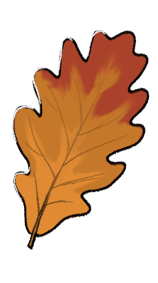String figures or string games are popular with many indigenous cultures throughout the world, from the Arctic to Australia, all around the Pacific, and in Africa. They are typically performed by one person, or two, as in the game of "Cat's Cradle", using a single loop of string. Often they are made one following another, while singing or telling a story. Many of the figures are made the same way in different cultures, but are known by different names or go with different stories. They may be used in competition, where the first person to complete a figure is the winner. Some people consider it improper to make string figures during certain seasons or certain times of the day. (This is possibly partly due to the addictive nature of this pastime.) Many of the figures are made the same way, but are known by different names or stories, or have different endings.
Once you learn the glossary of conventional shorthand terms that describe the simplest procedures, you can follow written step-by-step instructions for making even the most complex figures. Pictures do help, however. With practise, you may find that you can make a particular figure almost without thinking about the individual steps, much as you might tie a shoelace. After a while, it is possible to begin making one without remembering how it ends up, and then be surprised at the results.
This category is intended primarily for those sites which provide instructions for making string figures, whether traditional or newly invented. Other sites may be about people who perform the figures, or the stories associated with string figures.
More information
More information
Sites 4
The ISFA works to gather, preserve, and distribute string figure knowledge for future generations to enjoy this ancient pastime. They have a list of publications, an invitation to become a member, a mailing list, and links to related web sites. Of particular interest are the detailed instructions for making figures collected in 1924 by Diamond Jenness in the Canadian Arctic.
An essay by Lois Stokes, with speculations on the role of string figures in Hawaiian culture.
Michael P. Garofalo does presentations on string figures art, and performances of string figures, catches, and tricks in Northern California and Southern Oregon. Includes a recommended reading list and bibliography for string figures.
Instructions using string figure notation and prose descriptions, along with diagrams and some video clips. Features twelve beginner-level figures, followed by others of increasing difficulty, and a directory of performers.
Michael P. Garofalo does presentations on string figures art, and performances of string figures, catches, and tricks in Northern California and Southern Oregon. Includes a recommended reading list and bibliography for string figures.
The ISFA works to gather, preserve, and distribute string figure knowledge for future generations to enjoy this ancient pastime. They have a list of publications, an invitation to become a member, a mailing list, and links to related web sites. Of particular interest are the detailed instructions for making figures collected in 1924 by Diamond Jenness in the Canadian Arctic.
Instructions using string figure notation and prose descriptions, along with diagrams and some video clips. Features twelve beginner-level figures, followed by others of increasing difficulty, and a directory of performers.
An essay by Lois Stokes, with speculations on the role of string figures in Hawaiian culture.

Last update:
November 6, 2020 at 7:45:09 UTC

Check out
Recreation: Scouting: Regional: Europe: Switzerland
- Recently edited by elper
- Recently edited by elper